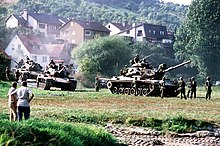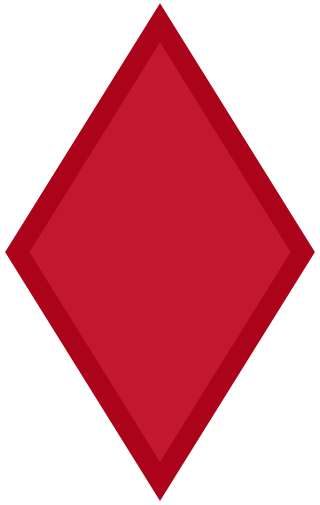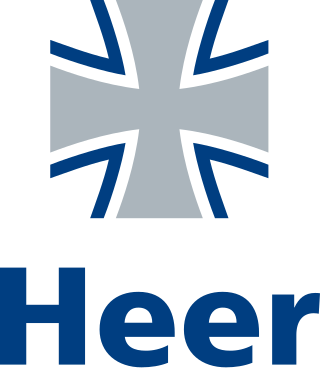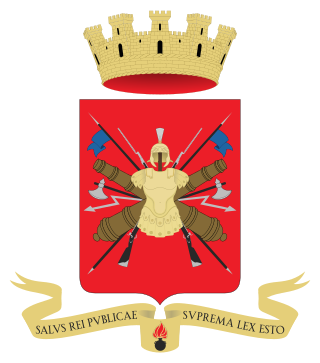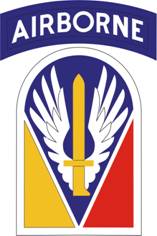| Name | Start Date | Major Units |
|---|
| Reforger I | JAN 1969 | (Germany based unit) USAREUR (U.S. Army Europe): HQ and 2nd Squadron of the 3rd Armored Cavalry Regiment, Nuremberg. (U.S.-based unit): 24th Infantry Division (Mech). |
| Reforger II | OCT 1970 | (Germany based unit) USAREUR (U.S. Army Europe): 3rd Infantry Division (Mech), Würzburg. (U.S.-based unit): 1st Infantry Division (Mech) [4] |
| Reforger III | OCT 1971 | (Germany based unit) USAREUR (U.S. Army Europe): 1st Armored Division (Ansbach). (U.S.-based unit) 1st Infantry Division (Mech). |
| Reforger IV | JAN 1973 | (Germany based unit): 557 QMC Idar-Oberstein. (U.S.-based unit): 1st Infantry Division (Mech), 2nd Armored Division. |
| Reforger V "Certain Charge" | OCT 1973 | (Germany based unit) USAREUR (U.S. Army Europe): 3rd Infantry Division (Mech), Würzburg; (U.S.-based units): 1st Infantry Division (Mech), 1st Cavalry Division. |
| Reforger 74 | SEP 1974 | (Germany based units) USAREUR (U.S. Army Europe): 2nd Armored Cavalry Regiment, Nuremberg; 1st Armored Division, Ansbach. (U.S.-based units): 1st Infantry Division (Mech), 1st Cavalry Division, 8th Infantry Division, Bad Kreuznach. |
| Reforger 75 "Certain Trek" | SEP 1975 | (Germany based units) USAREUR (U.S. Army Europe): 3rd Infantry Division (Mech),Würzburg; 2nd Armored Division, Nuremberg; 3rd Armored Division, Frankfurt-am-Main. (U.S.-based units): 1st Infantry Division (Mech), 1st Cavalry Division, 3rd Armored Cavalry Regiment (sent to Northern Germany to support British forces stationed there for the first time), II Marine Amphibious Force/36th Marine Amphibious Unit |
| Reforger 76 "Gordian Shield" | SEP 1976 | (Germany based units) USAREUR (U.S. Army Europe): 1st Armored Division, Ansbach; 2nd Armored Division, Nuremberg; 8th infantry Division (3rd Brigade, Mannhiem). (U.S.-based units): 101st Airborne, 1st Infantry Division (Mech) |
| Reforger 77 "Carbon Edge" | SEP 1977 | (Germany based units) USAREUR (U.S. Army Europe): 3rd Infantry Division (Mech), Würzburg; 2nd Armored Cavalry Regiment, Nuremberg; (U.S.-based units): 1st Infantry Division (Mech), 4th Infantry Division (Mech), 1st Cavalry Division, 3rd Armored Cavalry Regiment. |
| Reforger 78 "Certain Shield" | SEP 1978 | (Germany based units) USAREUR (U.S. Army Europe): 8th Infantry Division, Bad Kreuznach; 2nd Armored Cavalry Regiment, Nuremberg. (U.S.-based units): 4th Infantry Division (Mech); 5th Infantry Division (Mech); 9th Infantry Division (Mech); 1st Cavalry Division; 3rd Armored Cavalry Regiment. |
| Reforger 79 "Certain Sentinel" | JAN 1979 | (Germany based units) USAREUR (U.S. Army Europe): 3rd Infantry Division (Mech), Würzburg; 2nd Armored Cavalry Regiment, Nuremberg; 1st Armored Division, Ansbach. (U.S.-based units): 1st Infantry Division (Mech); 1st Cavalry Division. |
| Reforger 80 "Certain Rampart" | SEP 1980 | (Germany based units) USAREUR (U.S. Army Europe): 3rd Infantry Division (Mech), Würzburg; 2nd Armored Cavalry Regiment, Nuremberg; 1st Armored Division, Ansbach. (U.S.-based units): 1st Cavalry Division. |
| Reforger 81 "Autumn Forge" | SEP 1981 | (Germany based units) USAREUR (U.S. Army Europe): 3rd Infantry Division (Mech), Würzburg; 8th Infantry Division, Bad Kreuznach; 11th Armored Cavalry Regiment, Fulda; 3rd Armored Division, Frankfurt-am-Main; (U.S.-based units) 4th Infantry Division (Mech), 1st Cavalry Division. |
| Reforger 82 "Carbine Fortress" | SEP 1982 | (Germany based units) USAREUR (U.S. Army Europe): 3rd Infantry Division (Mech), Würzburg; 8th Infantry Division, Bad Kreuznach; 1st Armored Division, Ansbach. (U.S.-based units): 1st Infantry Division (Mech), 1st Cavalry Division. |
| Reforger 83 "Confident Enterprise" | SEP 1983 | (Germany based units) USAREUR (U.S. Army Europe): 8th Infantry Division, Bad Kreuznach; 11th Armored Cavalry Regiment, Fulda; 2nd Armored Division, Garlstadt; 3rd Armored Division, Frankfurt-am-Main; (U.S.-based units): 1st Cavalry Division. Culminated in Able Archer 83. [5] |
| Reforger 84 "Certain Fury" | SEP 1984 | (Germany based units) USAREUR (U.S. Army Europe): 1st Infantry Division (Forward), Göppingen; 3rd Infantry Division (Mech), Würzburg; 11th Armored Cavalry Regiment, Fulda. (U.S.-based units): 1st Infantry Division (Mech); 5th Infantry Division; 24th Infantry Division; 30th Armored Brigade (Sep); 2nd Armored Division (Mech): (TN-ARNG, Tennessee Army National Guard); 7th Infantry Division (Light): 3rd Brigade. |
| Reforger 85 "Central Guardian" | JAN 1985 | (Germany based units) USAREUR (U.S. Army Europe): 8th Infantry Division, Bad Kreuznach; 11th Armored Cavalry Regiment, Fulda; 3rd Armored Division, Frankfurt-am-Main. (U.S.-based units): 4th Infantry Division (Mech), 5th Infantry Division (Mech), 197th Infantry Brigade. |
| Reforger 86 "Certain Sentinel" | JAN 1986 | (Germany based units) USAREUR (U.S. Army Europe): 11th Armored Cavalry Regiment: Fulda; 1st Armored Division: Ansbach. (U.S.-based units): 1st Infantry Division (Mech), 24th Infantry Division (Mech); 30th Armored Brigade (Sep) (TN-ARNG, Tennessee Army National Guard); 7th Infantry Division (Light) (3rd Brigade); 32nd Sep Inf Bdge (WI-ARNG). |
| Reforger 87 "Certain Strike" | SEP 1987 | (Germany based units) USAREUR (U.S. Army Europe): 2nd Armored Division (Forward): Garlstedt. (U.S.-based units): III Corps HQ: Ft. Hood; III Corps Artillery HQ and 212th Field Artillery Brigade HQ: Ft. Sill; 1st Cavalry Division: Ft. Hood; 4th Infantry Division (Mech): Ft. Carson; 6th Cavalry Brigade (Air Combat): Ft. Hood; 45th Infantry Brigade (Sep): 1-279th Infantry (OK-ARNG, Oklahoma Army National Guard); 13th Support Command/Sustainment Command: Ft. Hood; 504th Military Intelligence/Battlefield Surveillance Brigade: Ft. Hood; 3rd Signal Brigade, Ft. Hood; 89th Military Police Brigade: Ft. Hood; 139th Public Affairs Detachment (PAD), 233rd Military Police Company: (33rd MP Battalion, IL-ARNG, Illinois Army National Guard); 420th Engineer Brigade (USAR, U.S. Army Reserve). 723rd Military Police Company: (165th MP Battalion, PA-ARNG, Pennsylvania Army National Guard) |
| Reforger 88 "Certain Challenge" | SEP 1988 | (Germany based units) USAREUR (U.S. Army Europe): 3rd Infantry Division (Mech), Würzburg; 8th Infantry Division, Bad Kreuznach; 2nd Armored Cavalry Regiment, Nuremberg; 11th Armored Cavalry Regiment, Fulda; 3rd Armored Division, Frankfurt-am-Main; Berlin Brigade, Berlin. (U.S.-based units): 1st Infantry Division (Mech); 3rd Armored Cavalry Regiment; ; 197th Infantry Brigade; 45th Infantry Brigade, 1-179th Infantry (OK-ARNG, Oklahoma Army National Guard). |
| Reforger 90 "Centurion Shield" | 11 JAN 1990 to 28 JAN 1990 | (Germany based units) USAREUR (U.S. Army Europe): 8th Infantry Division, Bad Kreuznach; 2nd Armored Cavalry Regiment, Nuremberg; 11th Armored Cavalry Regiment, Fulda; 1st Armored Division, Ansbach; 3rd Armored Division, Frankfurt-am-Main. (U.S.-based units): 1st Infantry Division (Mech), 2nd Armored Division, 10th Mountain Division (-); 31st Separate Armored Brigade Army (Alabama Army National Guard) |
| Reforger 91 | SEP 1991 | (U.S.-based unit) 4th Infantry Division |
| Reforger 92 "Certain Caravan" | SEP 1992 | (U.S.-based units): HQ, 1st Infantry Division (Mech); Parts 2nd Brigade, 1st (U.S) Infantry Division (Mech); HQ, 24th Infantry Division (Mech), 30th Armored Brigade (Sep) (Tennessee Army National Guard); HQ, 3rd Brigade, 7th Infantry Division (Light) [6] |
| Reforger 93 | MAY 1993 | (Germany based units) U.S. Army Europe: 1st Armored Division, Ansbach; 3rd Infantry Division (Mech) Würzburg. |

